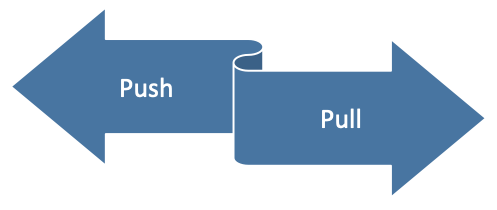learning resources
Employee retention strategies
Overview
Employee turnover is usually on the list of metrics HR functions and organisations use on the people function. Whether the turnover rate is high or low, the causes can be numerous and complex and in the case of high turnover the organisation may want to take action. These learning resources explore the subject of employee turnover, including why people leave, and investigates the different retention strategies available.
In the audio clip (to the right) your HR tutor Andrew gives an overview of the content and below is a summary of how this fits with the specific intermediate and advanced CIPD units.
Version 1.1 – updated February 2024.
Associate (level 5)
This learning relates to unit 5HR02 – Talent management and workforce planning
AC 3.2 – Compare different approaches to developing and retaining talent on an individual and group level.
Advanced (level 7)
This learning relates to unit 7HR02 – Resourcing and talent management to sustain success
AC 3.3 – Justify measures designed to reduce voluntary employee turnover.
1. Why do people leave organisations?
Employees resign from organisations for many different reasons. On occasion it is the attraction of a new job or the opportunity of a period outside the workforce that ‘pulls’ them. Sometimes employees are ‘pushed’ to seek alternative employment, perhaps because of dissatisfaction in their present jobs For example, an organisation may have a flat organisational structure, with few chances for employees to take the next step up the career ladder, and therefore it may seem that there is no other choice, and the employee is ‘pushed’ to leave. If employees feel that they cannot perform the job well enough through lack of training and development, or there is no opportunity to develop the role then employees may feel less engaged and start looking outside the organisation. Opportunities to develop new skills or offers of promotion from another organisation may entice employees away.

The decision to leave might also be triggered by a mix of both ‘pull’ and ‘push’ factors. A poor relationship with a line manger, resulting in disengagement, can often be a ‘push’ factor contributing to an individual’s decision to leave the organisation.
In high-turnover industries especially, a large proportion of employee turnover is made up of people resigning or being dismissed in the first few months of employment. Poor recruitment and selection decisions, by both the employee and employer, are typically to blame, together with badly designed or absent induction plans. Expectations are also often raised too high during the recruitment process, resulting in people competing for and then accepting roles for which they are in fact not right for.
2. Defining employee turnover
Employee turnover, sometimes known as ‘labour turnover, ‘wastage’ or ‘attrition’, is the rate at which people leave an organisation.
Turnover can be:
- Voluntary: an employee chooses to leave
- Involuntary: an employee leaves unwillingly.
- Functional: when low performing employees leave
- Dysfunctional: when high performing employees leave.
There’s no fixed level at which turnover begins to have a negative impact on the organisation. Much depends on the type of labour markets in which the organisation competes. However, turnover can present a problem where:
- Skills are relatively scarce
- Recruitment is costly and time-consuming
- The more valuable the employees leave, for example, individuals with specialist skills or strong relationships with customers.
Calculating the turnover rate
Turnover and its cost need to be measured in order to forecast future losses for planning purposes and to identify the reasons that people leave the organisation. Plans can then be made to address the problems causing unnecessary turnover and to reduce costs. There are a number of different ways of calculating turnover.
The employee turnover index is the traditional formula for measuring turnover:
Total number of leavers over period x 100
Average total number employed over period
This formula may be simple to use, but it can be deceptive. The main concern is that the percentage may be inflated by the high turnover of a relatively small share of the work-force, especially in times of heavy recruitment. Also, the total figure makes no distinction between functional and dysfunctional turnover.
Overall turnover figures are often used in published surveys of labour turnover because they tend to be more readily available and can be useful as a basis for benchmarking against other organisations. However, calculating a separate figure for voluntary turnover – specifically, resignations – can be useful.
It may also be helpful to consider some of the more complex employee turnover indices which take account of characteristics such as the stability index or measures of seniority and experience.
3. The cost of employee turnover
In the previous section we referred to some of the problems caused by employee turnover but what exactly are the costs?
Activity
On the right is a link to the CIPD’s most recent Resourcing and Talent Planning survey. Use this to find the following information:
- What does the report say about the cost of hiring staff?
- What is the current average level of employee turnover
- How does this compare with the level of turnover in your organisation?
*We’ll be using other sections of this report later on.
Activity
As you might have guessed, the cost of employee turnover goes beyond the cost of recruitment.
Spend some time thinking through what these other costs might include and make a list. You may find the following categories prompt your thinking:
- Direct costs – these are visible costs associated with replacing the person who has left, such as recruitment.
- Indirect costs – these costs are less visible and are associated with the impact of that person leaving. For example, what is the impact of having a vacant role?
Direct and indirect costs
It’s important to consider the indirect costs of someone leaving as research from the 1990s found that the ‘visible’, that is, direct, costs of recruitment accounted for only 10 to 15 per cent of total costs. By far the highest costs were associated with the inefficiencies arising while the post was vacant (33 per cent) and the inefficiency of new workers (32 percent).
The following factors are put forward for consideration when calculating costs:
- Direct cost of recruiting replacements (for example, advertising, interviewing, testing, etc)
- Direct cost of introducing replacements (induction cost)
- Direct cost of training replacements in necessary skills
- Leaving costs – payroll and HR administration.
- Opportunity cost of time spent by HR and line managers in recruitment, induction and training
- Loss of output from those leaving before they are replaced
- Loss of output because of delays in obtaining replacements
- Loss of client relationships, potentially leading to loss of clients
- Loss of output while new starters are on their learning curves acquiring the necessary knowledge and skills.
4. Retention strategies
Establishing why people leave
The first step in improving retention is to establish why people leave in the first place. Whilst this isn’t a retention strategy itself, determining the reasons for turnover, referring to the push and pull factors covered earlier, can help organisations target their efforts. Diagnostic tools that might be used for analysing turnover include:
- Exit interviews
- Surveys of ex-employees
- Attitude surveys
- Last job move surveys.
Methods for improving retention
The CIPD (2024) recommends organisations should consider the following elements, all of which have been shown to play a positive role in improving retention:
Selection – Give prospective employees a realistic job preview at the recruitment stage – don’t oversell the job or minimise aspects of the role.
Career development and progression – Maximise opportunities for employees to develop skills and careers. It’s also important to understand and manage people’s career expectations. Where promotions are not feasible, look for sideways moves that allow employees to gain different development experiences.
Consult employees – Ensure that employees have a voice through consultative bodies, regular performance conversations, attitude surveys and grievance systems. Where there is no opportunity to voice issues or concerns and influence outcomes, resigning may be the only option.
Be flexible – Wherever possible, accommodate individual preferences on working hours and times. As part of this, it’s also important to monitor workload and ensure it is manageable within working hours.
Pay attention to employee well-being – Support managers to help their teams thrive and manage issues such as workplace stress and presenteeism.
Treat people fairly – A perception of unfairness, whatever the management view of the issue, is a major cause of voluntary resignations. For example, perceived unfairness in the distribution of rewards is very likely to lead to resignations.
CIPD (2024) Employee Turnover & Retention factsheet, https://www.cipd.co.uk/knowledge/strategy/resourcing/turnover-retention-factsheet#81816, Accessed 21 February 2024.
Activity – current trends
Let’s go back to the CIPD’s latest Resourcing and Talent Planning survey to see what methods organisations are actually using. Look at the section on Talent Management, Retention and Turnover and make a note of the following:
- What are the most popular methods used to improve employee retention?
- Which methods have seen an increase in use? Which are not less popular? Why do you think that is?
- How do the trends compare with the approaches put forward by the CIPD in the previous section?
Activity – strengths and weaknesses
Each of the methods we’ve looked at come with strengths and weaknesses, which organisations should take into account when considering their use. Carry out the following steps to explore some of these:
- Select three retention methods – you may want to chose some of those listed in the CIPD report.
- Write a short definition of what the methods involve.
- Make a list of the strengths and weaknesses of each method. Think about how these would work in your organisation.
Once you’ve completed this, listen to Andrew exploring the strengths and weaknesses of one of the methods.
